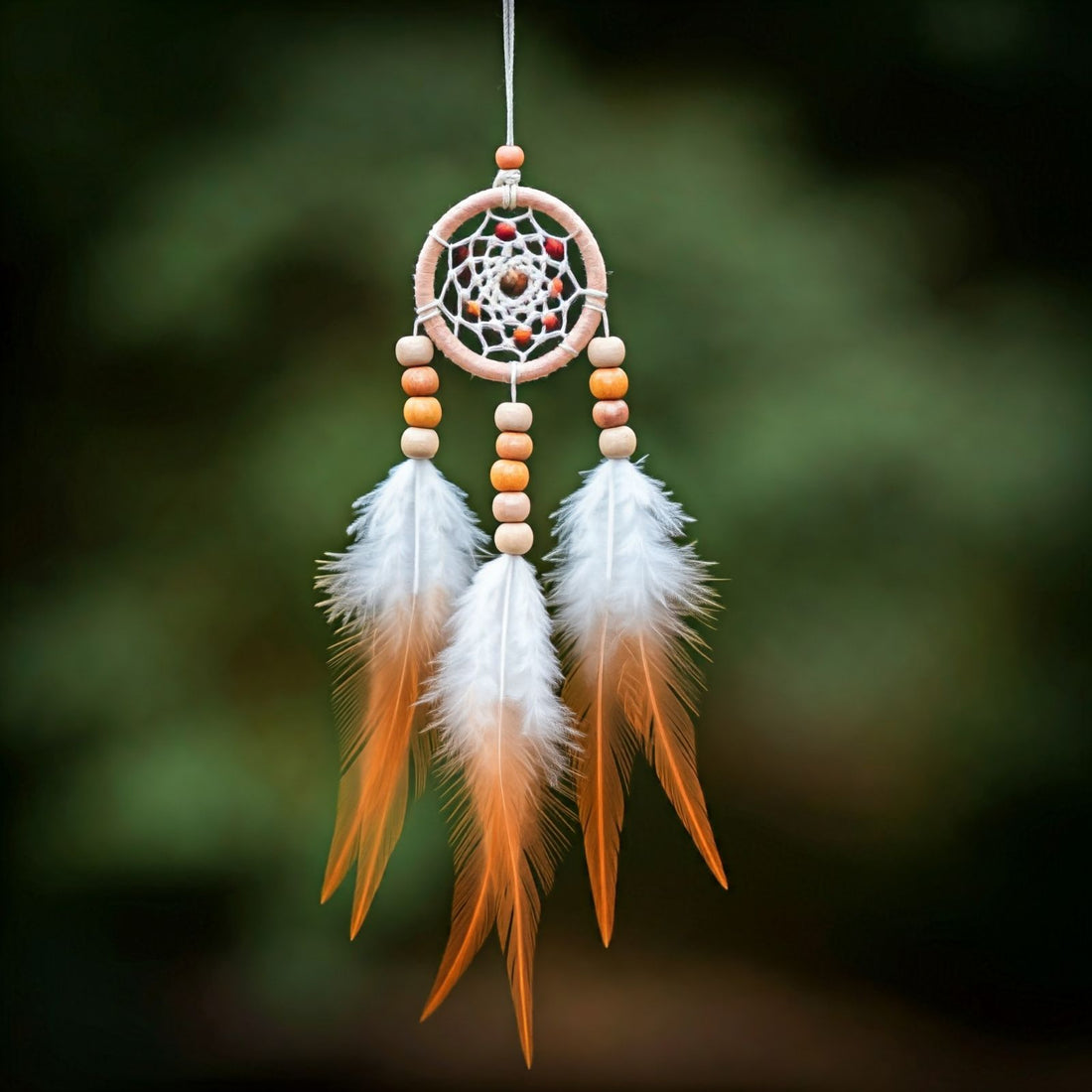How to Make a Dreamcatcher: A Complete Guide to an Authentic DIY Dreamcatcher

Dreamcatchers are fascinating objects deeply rooted in the traditions of North American Indigenous peoples. Their popularity extends far beyond their origins, and today they are not only objects of spiritual protection but also essential decorative pieces. In this article, we'll guide you through everything you need to know to make an authentic dreamcatcher, from choosing materials to various weaving techniques. Whether you're a beginner or an experienced crafter, you'll find tips and ideas here to create a unique dreamcatcher.
What is a Dreamcatcher?
A dreamcatcher is an object traditionally used to filter dreams. According to popular belief, good dreams pass through the web to reach the sleeper, while nightmares are trapped and destroyed at sunrise. Historically, dreamcatchers are associated with the cultures of the Ojibwe and Lakota peoples, but their use has spread to many other Indigenous cultures.
What is the purpose of a dreamcatcher?
Dreamcatchers are often hung above the bed to protect the sleeper, especially children. They are also used as symbolic objects to connect with spirituality and ancestral traditions.
Materials needed to make a dreamcatcher
Creating a dreamcatcher requires several basic elements, but there are many variations depending on the desired style and aesthetic.
- Dreamcatcher ring : Traditionally, the hoop is made of willow wood, but you can also use metal or plastic hoops.
- String or thread : Use cotton string, leather, or wool to weave the canvas.
- Feathers : Feathers, often from birds like the eagle, are a key element of the dreamcatcher. You can also use feathers from other birds or synthetic alternatives.
- Beads : Add wooden or bone beads to decorate the sensor.
- Additional decorations : Personalize your sensor with gemstones, charms, or even pieces of fabric.
How to make an authentic dreamcatcher?
Step 1: Preparing the hoop
Choose a ring of the desired size. If you wish to stay true to tradition, a willow wood hoop is ideal. Wrap it with a leather strap or string to give it a natural and warm look.
Step 2: Weaving the web
Weaving the web is a crucial step. Start by attaching one end of string to the ring, then begin weaving by forming regular loops all around the hoop. The classic pattern is a spiderweb, but you can experiment with geometric or asymmetrical designs. Each knot symbolizes strength and resilience, and the central web represents the universe.
Step 3: Add feathers and beads
Once the web is finished, it's time to add the decorations. Attach feathers to the bottom of the dreamcatcher using pieces of string or leather. Insert beads between the feathers for a more decorative effect. These elements not only add beauty to the dreamcatcher but also reinforce its spiritual meaning.
Step 4: Customization and Finishing
You can personalize your sensor by adding elements that reflect your personality or beliefs. For example, incorporate healing stones, seashells, or symbolic charms.
How to make a cardboard dreamcatcher: A fun activity for children
If you'd like to introduce your children to crafts, making a cardboard dreamcatcher is a great idea. Here's how:
1. Cut a circle out of cardboard : Use a round object like a bowl to trace a circle, then cut it out carefully.
2. Punch holes around the circle : Make holes at regular intervals all around the edge to allow for weaving the web.
3. Weave the web : Use string or thread to weave a simple web through the holes.
4. Add decorations : Decorate with paper feathers, ribbons or beads for a colorful effect.
Dreamcatcher for children and babies: Protection and Softness
Dreamcatchers are especially popular in children's and babies' rooms. They are chosen not only for their appearance, but also for their ability to soothe little ones during their sleep.
- Baby dreamcatcher : Opt for soft colors like pastel, and use natural materials to ensure safety.
- Children's dreamcatcher : Add playful elements like stuffed animals, superhero motifs or bright colors.
Where should you place your dreamcatcher?
The placement of your dreamcatcher is crucial to its effectiveness. Traditionally, it's hung above the bed, but it can also be hung in a window to catch the morning light. Make sure it's placed where it can swing freely to release the captured bad dreams.
The different types of dreamcatchers:
Authentic, Native American, and More
There is a wide variety of dreamcatchers, each with its own meaning and style.
- Indigenous dreamcatcher : Made by Indigenous artisans, these dreamcatchers are often rich in symbolism and made with traditional materials.
- Native American dreamcatcher : Represents the culture and beliefs of Native American nations, often with eagle feathers and sacred motifs.
- Authentic dreamcatcher : A truly authentic dreamcatcher is handmade with natural materials and using traditional methods.
Dreamcatcher in Art and Decoration
Dreamcatchers are not limited to being hung above beds. They have also become a source of inspiration for art and decoration.
- Dreamcatcher design and tattoo : Dreamcatcher designs are popular in body art and can symbolize protection and hope.
- DIY dreamcatcher : For craft enthusiasts, making a DIY dreamcatcher is a creative way to express one's personality.
Conclusion
Making a dreamcatcher is an enriching activity that connects you to ancestral traditions while allowing you to express your creativity. Whether you choose an authentic model, a children's dreamcatcher, or a DIY version, the important thing is to create something that resonates with you and brings you comfort.
Discover our collection of authentic dreamcatchers at Indigenous Crafts and bring a piece of tradition into your home.
